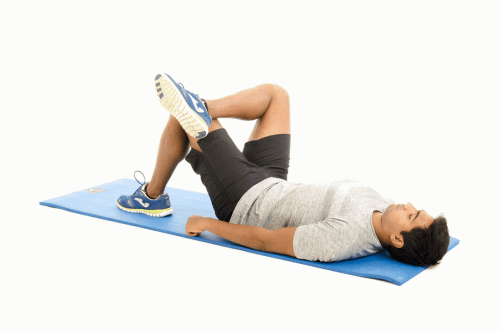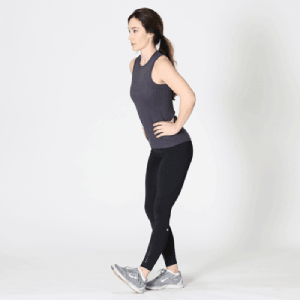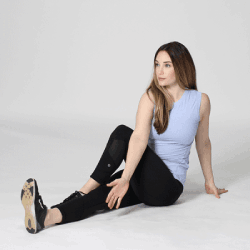Physical therapy for sciatica might be able to provide the relief you’re looking for. Sciatica is characterized by radiating pain along the sciatic nerve (originates from the lower back and travels down the legs). It can be a debilitating condition that significantly impacts your daily life. From sharp jolts of pain to numbness and tingling, sciatica can hinder your ability to perform even the simplest tasks. However, physical therapy offers a ray of hope for those seeking relief from this discomfort.
Contents
Understanding Sciatica: Causes And Symptoms
Sciatica often manifests as pain that radiates along the path of the sciatic nerve. To effectively address and manage sciatica, it’s essential to grasp the underlying causes and also recognize the range of symptoms it can present. In this section, we delve into the symptoms and causes.
Causes of Sciatica: Nerve Compression and Irritation
There are various reasons as to why sciatica can develop. Some of those causes include:
- Herniated Disc: A herniated or slipped disc can exert pressure on the nerve roots that form the sciatic nerve. Therefore, lead to nerve irritation and subsequent pain.
- Spinal Stenosis: Narrowing of the spinal canal, a condition known as spinal stenosis, can compress the sciatic nerve as it exits the spine.
- Piriformis Syndrome: The piriformis muscle, located in the buttocks, can sometimes irritate or compress the sciatic nerve, resulting in sciatica-like symptoms.
- Degenerative Disc Disease: With age, the intervertebral discs that provide cushioning between vertebrae can degenerate, potentially leading to nerve compression.
- Spondylolisthesis: This condition occurs when a vertebra slips forward over the vertebra below it, causing nerve impingement.
Symptoms of Sciatica: Recognizing the Discomfort
Sciatica often presents with a distinct set of symptoms, including:
- Pain: It involves pain that radiates from the lower back through the buttocks and down one leg. This pain can range from a mild ache to a sharp, shooting sensation.
- Numbness and Tingling: In addition to pain, you may experience numbness or tingling, known as paresthesia, in the affected leg and foot.
- Muscle Weakness: It can lead to muscle weakness in the leg, hence, making activities like walking or standing challenging.
- Pain Aggravation: Activities such as coughing, sneezing, or sometimes even sitting may exacerbate sciatic pain.
- Localized Discomfort: In cases where the piriformis muscle is involved, the pain might be concentrated in the buttocks.
At-Home Exercises And Self-Care Strategies For Sciatica
Empowering yourself with effective home exercises and self-care strategies is a valuable tool in managing sciatica and promoting your own well-being. Here is a range of exercises and practices that you can incorporate into your daily routine to alleviate discomfort.
Piriformis Stretch
- Lie on your back with your knees bent and feet flat on the floor.
- Cross one ankle over the opposite knee, creating a figure-four shape.
- Gently pull the uncrossed leg toward your chest until you feel a stretch in the buttocks.
- Hold for 20-30 seconds and switch to the other side.
Knee-to-Chest Stretch:
- Lie on your back with your legs extended.
- Gently bring one knee toward your chest, holding it with both hands.
- Hold for 20-30 seconds, then switch to the other leg.
Cat-Cow Stretch
- Start on your hands and knees in a tabletop position.
- Inhale as you arch your back, lifting your tailbone and head (cow pose).
- Exhale as you round your back, tuck your chin to your chest, and arch your upper back (cat pose).
- Repeat this movement for several repetitions.
Child’s Pose
- Kneel on the floor with your big toes touching and knees spread apart.
- Sit back on your heels and extend your arms in front of you, lowering your forehead to the ground.
- Hold the stretch for 20-30 seconds, breathing deeply.
Standing Hamstring Stretch
- Stand with your feet hip-width apart.
- Extend one leg in front of you, resting your heel on a surface at hip level.
- Lean slightly forward from your hips, keeping your back straight, until you feel a stretch in the back of your leg.
- Hold for 20-30 seconds and switch legs.
Sciatic Nerve Glide
- Sit on a chair with your feet flat on the floor.
- Straighten your affected leg and flex your foot upward.
- Slowly lean forward from your hips, keeping your back straight.
- You should feel a gentle stretch along the back of your leg. Hold for a few seconds and return to the starting position.
Seated Spinal Twist
- Sit on the floor with your legs extended in front of you.
- Bend one knee and place the foot on the outside of the opposite leg.
- Twist your torso toward the bent knee, placing your opposite elbow on the outside of the bent knee.
- Hold the stretch for 20-30 seconds and switch sides.
How Does Physical Therapy Provide Relief From Sciatica? 
When the discomfort of sciatica strikes, seeking effective relief becomes a top priority. Physical therapy is one method that can provide you relief from sciatica. With its focus on tailored exercises, targeted interventions, and holistic approaches, physical therapy plays a significant role in promoting healing and restoring your quality of life.
Comprehensive Assessment and Individualized Care
The first step in your physical therapy journey for sciatica relief involves a thorough assessment. Firstly, a skilled physical therapist will evaluate your specific condition, taking into account factors such as the underlying cause of your sciatica, your medical history, and your current physical abilities. This assessment serves as the foundation for creating an individualized treatment plan specifically for your unique needs and goals.
Pain Management and Symptom Relief
Physical therapists employ a range of techniques to manage pain and alleviate sciatica symptoms. These may include:
- Manual Therapy: Hands-on techniques, such as joint mobilizations and soft tissue mobilizations, can help alleviate muscle tension, reduce nerve irritation, and improve mobility.
- Modalities: Therapeutic modalities such as ultrasound, electrical stimulation, and heat or cold therapy may be used to reduce pain and inflammation.
- Posture and Alignment Correction: Your physical therapist can identify and address postural imbalances that contribute to sciatic pain, helping you optimize your body’s alignment for relief.
Targeted Exercises and Stretches
One of the cornerstones of sciatica relief through physical therapy is a customized exercise regimen. Your physical therapist will guide you through a series of exercises and stretches designed to:
- Improve Flexibility: Gentle stretches can help lengthen tight muscles as well as reduce pressure on the sciatic nerve.
- Strengthen Muscles: Targeted strengthening exercises can stabilize the spine and pelvis, supporting the structures around the sciatic nerve.
- Enhance Core Stability: Strengthening the core muscles can improve posture and reduce strain on the lower back.
Preventing The Recurrence Of Sciatica
Maintain a Healthy Weight: Excess body weight can exert additional pressure on the spine and contribute to sciatica. Therefore, by adopting a healthy and balanced diet and engaging in regular physical activity, you can support a healthy weight and reduce the risk of recurrence.
Practice Proper Body Mechanics: Paying attention to your body mechanics is crucial in preventing sciatica from resurfacing. Lift objects with your legs, maintain good posture, and avoid activities that strain your back.
Stay Active: Regular exercise plays a pivotal role in preventing sciatica recurrence. Engage in activities that strengthen your core muscles, improve flexibility, and support the stability of your spine. Apart from this, stretching exercises can keep your muscles flexible and reduce the likelihood of muscle imbalances that contribute to sciatic nerve compression. Consult your healthcare provider before starting any new exercise routine.
Mindful Posture: Be conscious of your posture throughout daily activities. Maintaining proper alignment can alleviate stress on your spine.
Ergonomic Considerations: Make ergonomic adjustments in your workspace and at home. Supportive chairs, ergonomic keyboards, and well-designed workstations can reduce strain on your back.
Stay Hydrated: Proper hydration supports the health of your intervertebral discs, which act as cushions between your vertebrae. So, it is important to drink enough water.
Manage Stress: Chronic stress can exacerbate muscle tension and contribute to sciatica. Incorporate stress-reduction techniques such as mindfulness, deep breathing, meditation, or yoga into your routine.
Regular Check-ins: Continue to communicate with your healthcare provider and physical therapist. Regular follow-ups can help monitor your progress, address any concerns, and make necessary adjustments to your management plan.
Conclusion
If you are suffering from sciatica, then physical therapy shines as a beacon of hope. By addressing root causes and enhancing mobility, it offers a path to lasting comfort and well-being. Armed with exercises and therapeutic techniques, you can take charge of your recovery journey. With physical therapy as your ally, bid farewell to sciatica’s grip and step into a future filled with vitality and relief.
Physical Therapy helps patients recover from pain. If you’re experiencing Back, Shoulder, Knee, Neck, Elbow, Hip, or Arthritis pain, a physical therapist at PhysioMantra can help: Book an online physical therapy session.










